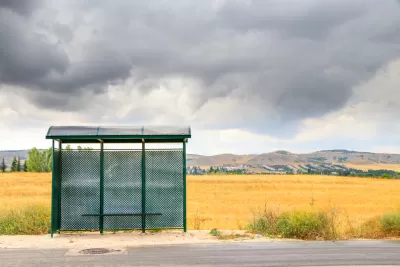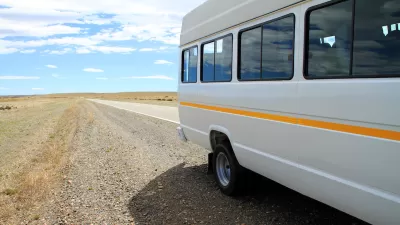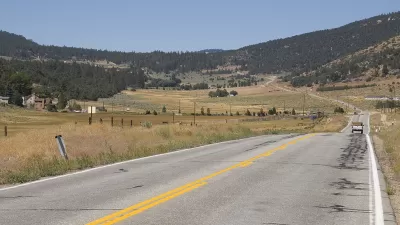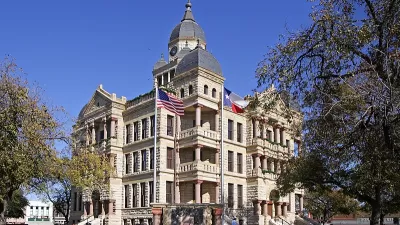With limited resources and dispersed service areas, rural transit systems are turning to technology to provide on-demand service and improve transit options for residents.

"Good public transportation in any city is a lifeline for accessing jobs, healthcare and education." But "While some assume everyone in rural America owns a car, most counties with high rates of zero-car households are actually rural ones," write Scott James Matheson and Sam Couvillon. "[M]ost rural areas have been cut off from access to effective public transportation for years. But that is starting to change thanks to new transit innovations that rural communities are putting in place, a welcome trend that federal infrastructure dollars could accelerate."
Matheson and Couvillon, both mayors of small Georgia towns, say "Public transit has always looked different in communities like ours," with needs that fixed-route bus systems and trains can't meet as efficiently as in big cities.
But there is another, game-changing approach, write Matheson and Couvillon. "We’re using technology to run our own on-demand transit services that are efficient and are drastically expanding access to affordable, convenient and reliable transit. We launched these innovative transit services in a matter of months — not years or decades — by focusing on outcomes for who we want to serve and embracing new ways that get us there."
Valdosta, where Matheson is mayor, launched an on-demand public transit service that has received over 14,000 ride requests per month. Gainesville, the city where Couvillon serves as mayor, "launched WeGo to replace three underperforming fixed routes and immediately saw dramatic improvements," quickly expanding the program to the entire county.
We recently noted a similar argument for the potential of small and rural transit systems to lead the way in electrification. As the authors of this article note, there's an advantage to not having to wait decades for massive, resource-intensive projects. Using technology and on-demand services, "We can deliver transformative, game-changing transit service in a way that is efficient, flexible and adaptable to a community’s mobility needs."
FULL STORY: What big cities can learn from the rural US about public transit

Americans May Be Stuck — But Why?
Americans are moving a lot less than they once did, and that is a problem. While Yoni Applebaum, in his highly-publicized article Stuck, gets the reasons badly wrong, it's still important to ask: why are we moving so much less than before?

Using Old Oil and Gas Wells for Green Energy Storage
Penn State researchers have found that repurposing abandoned oil and gas wells for geothermal-assisted compressed-air energy storage can boost efficiency, reduce environmental risks, and support clean energy and job transitions.

Placekeeping: Setting a New Precedent for City Planners
How a preservation-based approach to redevelopment and urban design can prevent displacement and honor legacy communities.

San Francisco’s Muni Ridership Grew in 2024
The system saw its highest ridership since before the Covid-19 pandemic, but faces a severe budget shortage in the coming year.

Colorado Lawmakers Move to Protect BRT Funding
In the face of potential federal funding cuts, CDOT leaders reasserted their commitment to planned bus rapid transit projects.

Safe Streets Funding in Jeopardy
The Trump administration is specifically targeting bike infrastructure and other road safety projects in its funding cuts.
Urban Design for Planners 1: Software Tools
This six-course series explores essential urban design concepts using open source software and equips planners with the tools they need to participate fully in the urban design process.
Planning for Universal Design
Learn the tools for implementing Universal Design in planning regulations.
Heyer Gruel & Associates PA
City of Moreno Valley
Institute for Housing and Urban Development Studies (IHS)
City of Grandview
Harvard GSD Executive Education
Salt Lake City
NYU Wagner Graduate School of Public Service
City of Cambridge, Maryland





























